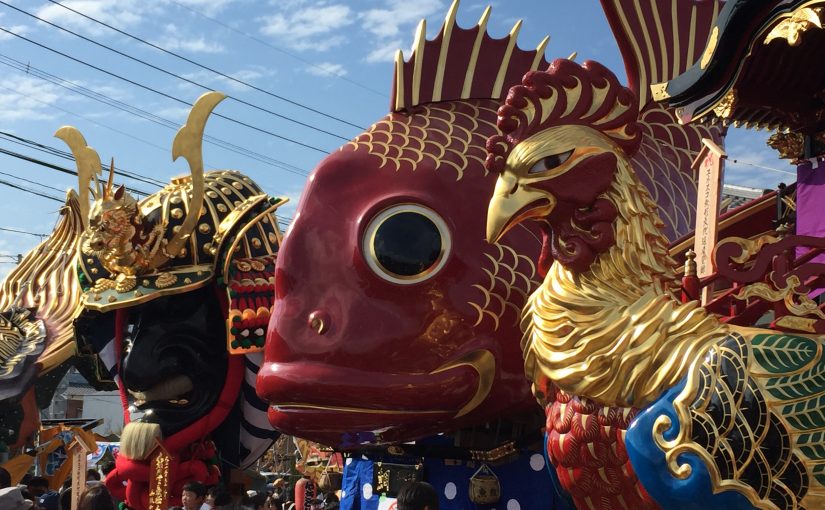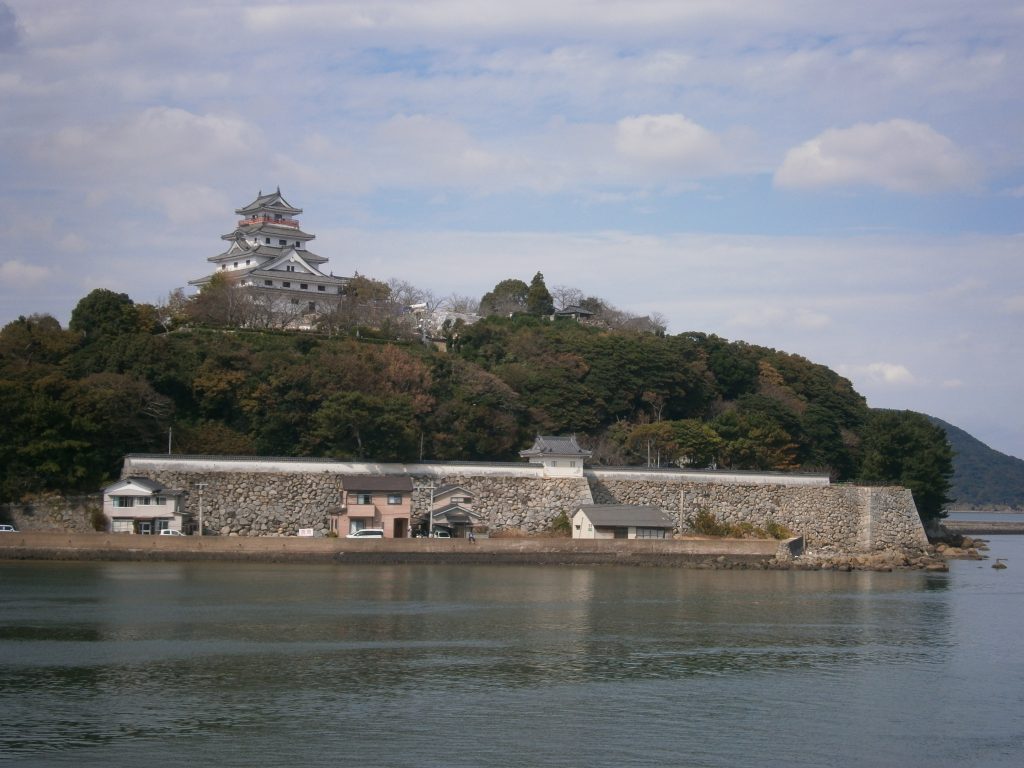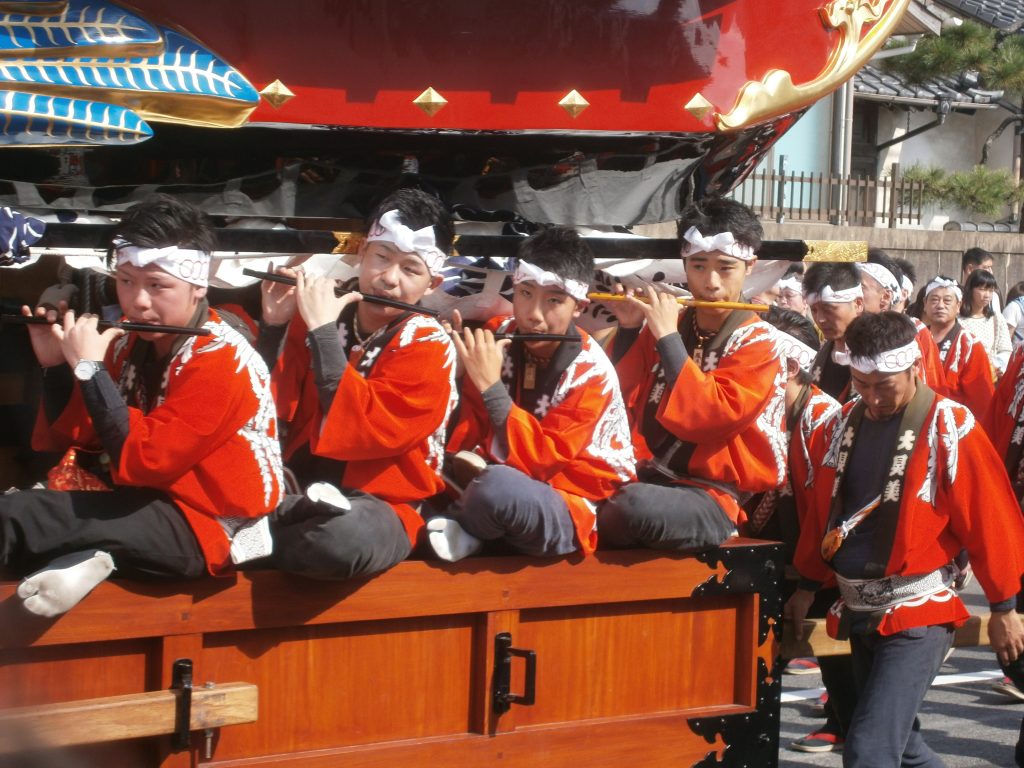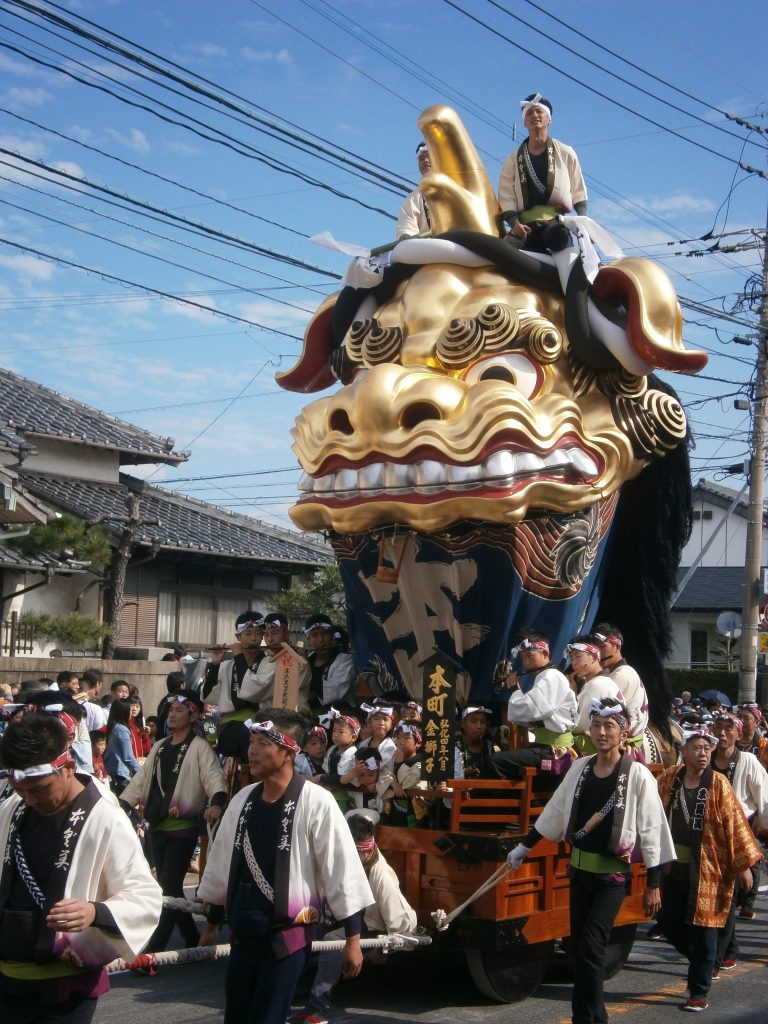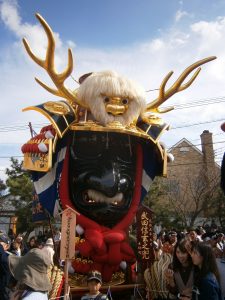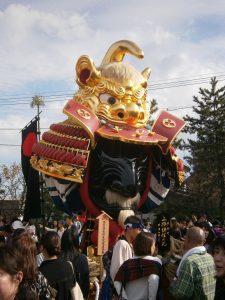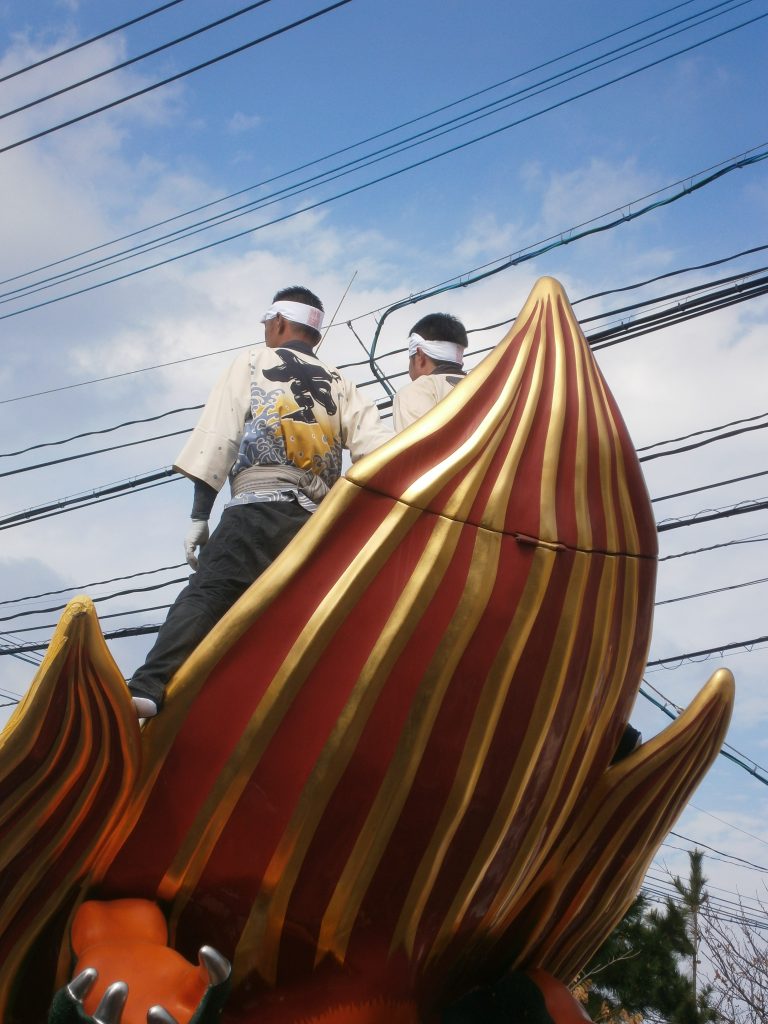It took until the end of November for the summer heat to finally, finally die off completely. Last week, I pulled all of my jumpers out of my wardrobe with glee and have been nesting in them ever since. I’ve spent the majority of the summer explaining to various people that the British aren’t great in the heat and no, I didn’t just jump in a lake. It’s been relentless, but coming from someone that starts to melt when the temperature squeezes above 20C, that doesn’t really mean much. All that English rain has made me very delicate. Japanese people, on the other hand, seem to like that feeling of airless humidity so much that they use the heating on the train while it’s still in the high teens outside. In Japan, dressing and acting appropriately for the season is often more important than the actual day to day weather. Indian summer or not, the heating goes on and the heavy duty coats come out the second the seasons officially change. You would not believe how ready I am to complain about the cold.
Even when I’m grumpy, autumn is my favourite season in Japan. The red leaves transform the mountainsides and hidden temples open their gates for a few days as the nights draw in. I think. My journey to work doesn’t take me past many forests. It’s easy to blink and feel like you’ve missed everything.
Living in Saga doesn’t help this feeling. Having been sleepy and largely devoid of action for most of the year, the prefecture holds its two biggest events over one long weekend in early November. The Balloon Festival engulfs my town for a few days and briefly gives me abandonment issues. I don’t know who all those other foreigners are, but I don’t like that they steal my limelight.
In an attempt to feel special again, I went with a few of Saga’s resident foreigners to see the other big event: the Karatsu Kunchi. Karatsu is a seaside town on the northern coast of Kyushu, about an hour and a half from Saga and Fukuoka by train or car. It has a famous castle and, erm, other things. Forgetting the sights is quite a common problem in Saga. Much like Saga and the Balloon Festival, the Karatsu Kunchi is the one event of the year that livens up the city and comes highly recommended by anyone with ties to the place. Twice a week, for most of October. I have enthusiastic colleagues.
The Karatsu Kunchi is a three day parade that has been put on by the local shrine for several centuries, where the city is filled with food stalls, a festive atmosphere and the occasional confused foreigner. On the second day, 14 huge floats representing legends, historical figures and mythical creatures are pulled through the streets, with each district of the city taking charge of one. Honestly, it’s a miracle that anyone else in the town is left to watch. Even the local schoolchildren are involved. While they are also paraded on the other days, the second day usually falls on a national holiday and has the longest parade route, so it’s the best day to go and experience the event.
After charging down from the mountains in a worryingly overfilled K-car (think a hatchback, but slow and square), we arrived in the city with the parade in full swing. The parade finishes outside of a high school west of Karatsu Castle, so we set up camp just around the corner. This allowed us to see the floats go past and also watch them being dragged through the sand of the school yard in an impressive show of strength. Apparently, they used to do this on the beach a few hundred metres away. Maybe the Europeans leaving their towels out at breakfast time ruined it for them.
You hear the floats coming before you see them. Each float has flautists and drummers setting a rhythm, and as they approach cries of “Enya!” become distinguishable above the general hubbub of the crowd. This is apparently a sound made in Japanese when you’re trying to move something heavy, and not a tribute to the Irish singer. That particular meme hasn’t made it here yet. Not long after this, the float bursts into view and careers around the corner. They are very old, expensive and often have people standing on them, so this can be a buttock-clenching moment.
We were lucky enough to be stood at a spot where the floats wait as the one before is dragged through the sand. When they got a break, the men pulling the floats descended into chaos. The teams on the two tow ropes yelled “Enya!”, trying to outshout each other until someone gave up, trailing off into a Wilhelm Scream. They threw purification salt, ran over to the float and generally tried to avoid the grumpy older men who were trying to restore order. At times, it was reminiscent of a rock concert, only the bouncer was in a loincloth and had a bamboo stick that he was itching to break over someone’s back. Eventually, they came back to their ropes and began to pull again to the beat of the drum, doing their best to keep everyone on the float upright and avoid snagging millions of pounds of important cultural heritage on telephone wires and traffic lights.
There was some explanation in English that was very occasionally audible over the melee. This is actually quite rare in Kyushu, so I was doing my best to listen. It turns out each float on the parade has subtle differences in the way they do things, based on the history of the float and who or what it represents. Often these come about because someone involved has been mind-meltingly Japanese. For example, two of the floats represent local daimyo, or lords, from the Takeda and Uesugi families. The two daimyo lived fairly close together and, naturally, hated each other. This is fair enough, since there probably wasn’t a huge amount to do back then except strap on a helmet and try to loosen a few of your neighbour’s teeth. During one of what was probably a series of campaigns, Takeda and his bruisers were holed up in a retreat somewhere and running dangerously short on salt. Worms in your food and crippling deficiencies aren’t particularly wonderful, so this would seem like a good time for Uesugi to do some squashing. However, the daimyo, in his great wisdom, decided to actually send a huge load of salt to his enemy. This was apparently so that if he ever managed to wear Takeda’s intestines as a necklace, he could say he bested him in a fair fight. As a result, the Takeda float at the festival doesn’t scatter salt even for religious purposes, out of respect to the man Takeda wanted to perform medieval surgery on. Lost opportunity for some smack talk there, big T. Both families are now represented in the parade and, since they are apparently the best of enemies, their two floats sit next to each other on the parade ground. Even in the middle of a group of fantastical creatures they can’t get away from each other. There’s a lesson in there somewhere, but I’m damned if I know what it is.
Once we were done comparing the moustaches on the helmets of those two bad boys, we decided to have some festival food. Street food in Japan is mostly exclusive to events and while it’s expensive, the quality is usually pretty good. At the Karatsu Kunchi, the floats sit on display for a couple of hours before being pulled back, so there’s plenty of time to wander around, find some food to eat, kick back and relax. Outside the shrine there is a huge row of stalls selling all kinds of Japanese food and also a bouncy castle if you fancy tossing your child in and making a break for it. Even if you don’t intend to watch the floats return, it’s worth sticking around for a while and trying to soak up the atmosphere. You may even make a new drunk friend. At 1pm. Oh dear, Japan.
We stuck around for a bit, had some yakisoba and a drink before barrelling back through the mountains in our souped up go kart. As the sunset burned across the skyline and the wheels of the car threatened to fall off, I reflected a little on my colleague’s enthusiasm. In a place that doesn’t receive many tourists and which has a reputation for being boring and sleepy, it’s understandable to be a little overexcited when events occasionally come along. While it may not be Tokyo, all the locals of Saga that I know are keen that visitors enjoy themselves here, even if the prefecture lacks a world famous site. There is always something to do if you look hard enough. Who knows? If you throw yourself into the small things and the recommendations of others, you might find yourself surprised. They could be a window into a side of Japan that most people never get to experience. At the end of the day, that’s why people travel.
